#See what annoys me the most about the ‘Talia is a cold hearted manipulator who is just using Jason’ trope in fic is that
Explore tagged Tumblr posts
Text
One thing that is not nearly discussed enough is the way that 16 year old catatonic Jason imprinted on Talia like a baby duck. Like can you imagine the image of Talia walking around the league base being followed by a mute dazed looking teenager and nobody’s allowed to say shit about it?
#League assassin 1: who the hell is that? League assassin 2: oh that’s just Lady Talia’s pet zombie boy don’t worry about it#Jason Todd#dc#See what annoys me the most about the ‘Talia is a cold hearted manipulator who is just using Jason’ trope in fic is that#even the least charitable reading of Jason and Talia’s lost days dynamic cannot change the fact that he was her poor little meow meow#and that there is genuine fondness there. From BOTH of them
572 notes
·
View notes
Note
They're sort of a fandom but Batfam!

thanks guys!!! this got so long omg, I’m so sorry dsjkfhdskajh
my favorite female character: CASSANDRA MFING CAIN. She is simultaneously one of the most badass characters I’ve ever had the pleasure of knowing about, while also being just……….so adorable. Like, I love that she can be the scariest and most competent Bat (she is absolutely 100000% the next Batman I do not take criticism) but also, she’s such a sweetheart. She really loves people (Steph and Duke especially so), she’s an amazing friend and sister, and she is just so authentically herself and does what she wants when she wants, and she works so hard for everything, and I just. Oh my god I love her so much.
my favorite male character: this is so difficult but I have to say Dick Grayson. I Must. He’s basically what started all of this!!! I mean yeah okay Bruce was first, but Robin/Dick is what made Batman interesting and was the first member of the batfam, the one that made it a real family. In addition to that, Dick is just??? So interesting?????? He was the first kid sidekick, he lead the Teen Titans teams, he’s always kind of existed in this place of being the lighthearted one with the Batfam, but the serious one in most other contexts. HE REBELLED FIRST. Nightwing is a fuck you to his dad!!!! I love that! Plus he’s beautiful and has some of the best love interests (I’m talking about Kory and Roy here folks). He’s imperfect and has such depth and I love him kdsjfhjkdshfah
my favorite book/season/etc: I actually really like all the stuff that comes after Bruce “dies”? Seeing them all struggle and fight with each other and everything is really interesting. I love Tim here especially, just bc he’s so fucked up and such a teenager. When characters seem to be having two totally different conversations are SO INTERESTING and that’s what was kind of happening here with Tim and Dick – Tim feels betrayed and hurt, Dick feels stressed and like Tim is ready to move on. And Damian is just an adorable little asshole ksdjfshkjhakjh
my favorite episode (if its a tv show) issue: look I’m a sucker for Dick & Jason feels and I really enjoyed their moments (however few there are) in NTT/Tales of The Teen Titans/etc. They’re pretty small but so cute – it’s really nice to see them trying to figure out how to be brothers!!
my favorite cast member: David Mazouz!!!! Perfect perfect perfect Bruce. I also did like Batfleck, more for the look of exhausted 40 year old man than the story/characterization, but David takes the cake. He does all the different facets of Bruce – traumatized child, obsessive teenager, Brucie the party animal, etc – so well, PLUS THEY HAVE THE SAME BIRTHDAY. It’s meant to be yall
my favorite ship: most of my Batfam ships are one batfam member/one non member (like Dickkory/Dickroy, Dinahbabs, Timkon, etc). the only one fully in the fam would be Bruce/Talia. When written correctly, they are so sweet and so tragic. The star crossed lovers trope has never looked so good as it does when its them.
a character I’d die defending: Damian!!!! Admittedly I do get annoyed by him,,,, a lot,,,,,, but really. He’s a child who’s been abused and manipulated and lied to. He was raised in such a dangerous, traumatic environment, and I fucking hate when people act like he’s always going to be the annoying, murderous brat he was when he was first taken away from that environment. He has to heal, and he IS healing. He loves animals so much, he learns to love Dick (and at least get along with the others), he makes friends, he doesn’t kill anymore. He is doing better. There’s no fucking way he ends up as cruel and cold-hearted as some people insist he will. If you don’t like him, just shut the fuck up
a character I just can’t sympathize with: Babs. It’s not that I can’t sympathize with her, it’s more that I just don’t like her lol. I find Batgirl!Babs really boring and regressive for literally everyone involved. The way Babs became Oracle was gross but it gave her such GROWTH and she got to be her own character as Oracle (and also tell people off for pitying her bc she’s in a wheelchair). Batgirl was passed on to Cass, who is both Asian and disabled rep, then to Steph, in a way that was much healthier for the Batgirls than how Robin was passed down. Babs being Oracle gives even more rep to disabled children/girls in wheelchairs, and she isn’t stuck in Gotham! She isn’t part of the Batfam, she’s a Bird of Prey!!!! So much more interesting!!!! Plus D*ckB*bs is boring as fuck and does a disservice to both of them. Let them grow and be their own people and stop making me see Batgirl!Babs alongside Robin!Damian. DC, that’s illegal!!!
a character I grew to love: Talia. I was sadly infected with the Grant Morrison bullshit when I first joined the fandom and I hated Talia. But I’ve read more comics and metas about her and I just. I LOVE HER. She is such a badass and I find her motives (when well written) to be really interesting!!! She’s loyal to her dad but wants the best for Damian, and does have genuine affection for Bruce and Jason. She’s not the heartless woman some people/writers make her out to be, she has compassion and drive. She doesn’t care what people think about her. I want to marry her sdkjhfjksah
my anti otp: Jason/Roy. In any context other than RHaTO, it makes no sense and does a disservice to both characters. Jason and Roy would not want to be together in most reboots of DC, because of the connection with Dick. Would you want to date your asshole older brother’s ex/best friend? Would you want to date your ex/best friend’s little brother? Would you like to date a man with that history who is also struggling with severe trauma/addiction issues (respectively) and doesn’t get help for it because of bad writing? Imagine Roy looking Dick in the face and saying “yeah, I’m fucking your little brother, who I sort of knew as a pre-teen”. In RHaTO, this is mostly fine bc Roy and Dick have no relationship at all, and Jason needs someone to take care of, and Roy is so incompetent that he fits that bill. But ANYWAYYYYY point is, I refuse to read fics with this ship in it thank you goodnight
send me a show/movie/fandom and I’ll answer these questions!!
#i am SO SORRY i cant believe how much i rambled#long post#ask games#batfam#i barely talked about duke and bruce. didn't mention alfred. didn't mention kate. ksdjhfkjsadh#there are too many damn ppl in this family#Anonymous#anti jayroy#anti babs gordon#whoops forgot to tag that#sorry :(
37 notes
·
View notes
Text
Wonder Woman: on female characters in comics PART 2
part 1, 2, 3
Please bear in mind that English is not my first language!
Part 2: Useless pretty, sexy bad and second-hand skirts
Summary: A classification of female characters in comics.
Before we get going, an important note: this is not character bashing. I may sound extremely critical and snide at times, but it doesn’t mean that I hate these comics or these characters or even these authors! Batman, for instance, is my absolute favorite fictional character. I also have the biggest soft spot for Harley Quinn and Lois Lane. However, it doesn’t mean that it gives them a free pass. Quite the opposite, in fact.
Text under the cut.
In the previous chapter, we’ve touched on ‘fridging’ and why it’s not cool (ha-ha see what I did here). Due to particular conditions, women were pretty much absent from the picture and therefore, could not influence how women were portrayed for a while. Male visualization of women turned out to be quite… limited. Reading comics, I have noted that female characters in the comic books can generally be divided into four categories. There are, of course, some exceptions, but the percentage is far too small. As I thought about these categories, I’ve realized that three out of four are constructed though the sexism of the superhero narratives, while the last one is in a constant struggle against it. There are damsels in distress, femme fatale, gendered spin-offs and the female superheroes. Some characters fluctuate from one category to another, or fit into more than one. Let’s talk a bit more about the first three, so it’ll become clearer, why the female superheroes are so important for representation of women.
The first category is the damsel in distress: the mother or the aunt, the girlfriend, most often powerless.
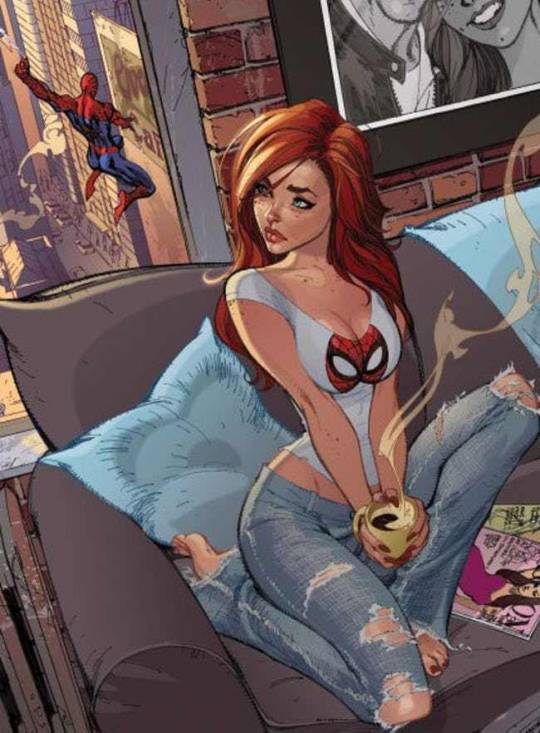
It includes such characters as Lois Lane, Vicky Vale and Iris West. Interestingly, all three of them are journalists, which arguably justifies their rash behaviour, which often lands them in trouble. They are nice, generally understanding, but quite often annoying, as they manage to land themselves in trouble yet again. It’s like they don’t understand that they should just sit down, because they either land in villain’s hands or they pressure the hero to quit heroing. With time, they have become snarky and easy-going, and obviously able to take care of themselves (until they aren’t) but the truth is, they are indistinguishable. They are cut out from the same piece of cardboard, as precious time for character development cannot be wasted on them, and they serve as conscience, motivation and ‘someone to come home to’. They are the classic ‘women in the refrigerators’ (Simone, 1999) and their interests and plot arcs rarely transcend the love interest, or in case of Iris and Aunt May, the relative of a superhero.
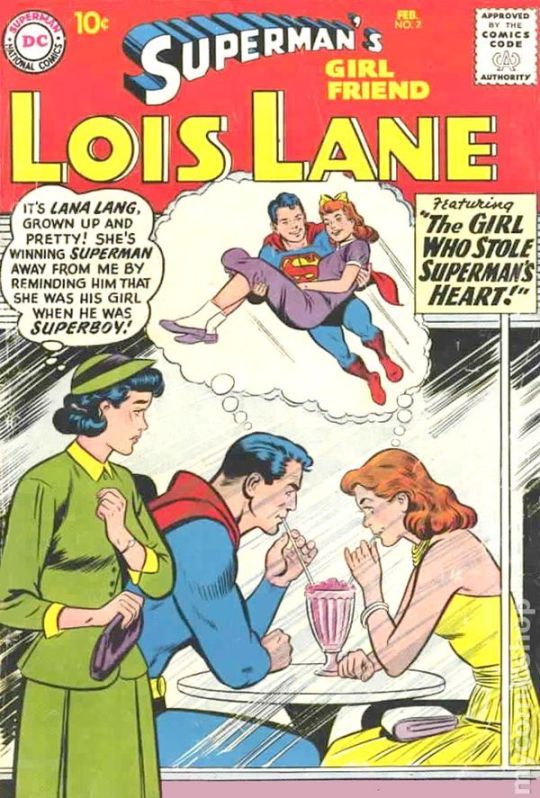
Probably the most notable example will be the Injustice franchise, where Superman becomes a tyrannical dictator, stricken with grief after the death of Lois, who has also been pregnant with his child at the time (Injustice: Gods Among US [I] #1, 2013)*. The comic series depicts the extent of Superman’s psychological trauma, as he is deceived by the villain into killing Lois with his own hands, thus, focusing not on the tragedy itself, but solely on Superman’s reaction to it. By the end of the series, the reader still has no idea, what kind of person was Lois. She is not important, what is important is that now the superheroes have an excuse to fight each other. Nobody in the comics really mentions her. The only time someone does, it is to reprimand Superman for his actions, all while Superman plans kidnapping Lois from another dimension because she’s just replaceable. Of course, this isn’t a story about Lois, but if a main heroine of Superman family cannot get a decent dealing, what’s there to hope for, for a lesser female character? We do not see her family or friends. She doesn’t really have a life outside her husband and it is precisely her connection to Superman that gets her in trouble. I might be picky, but having a joint surname (Lane-Kent, West-Allen, Watson-Parker) isn’t enough of a feminist statement for me.
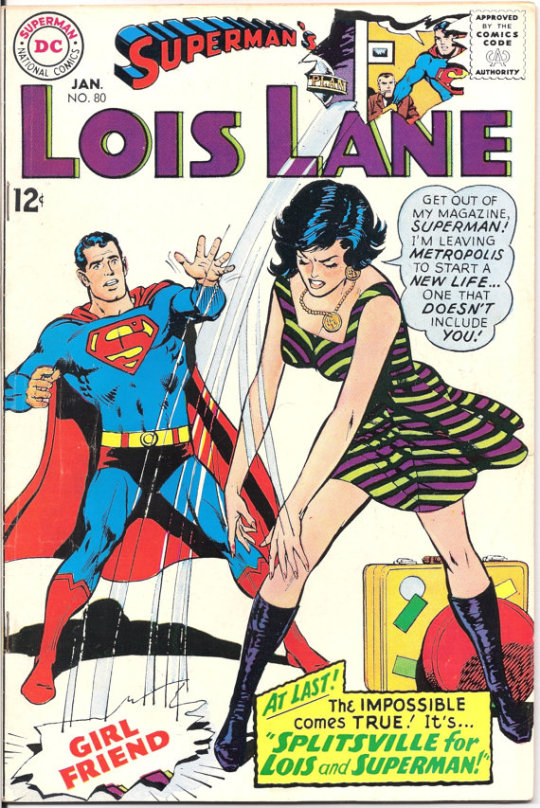
The second category is the femme fatale or a seductive villainess, such as Talia al Ghul, Poison Ivy and Catwoman.

Most often, she is attracted to the superhero and tries to sway him of his righteous pass with her female charm, while he treats her as a lesser threat than male villains, because he believes she can be ‘good’ again. If she rejects the ‘good side’, she gets further from humanity and, thus, loses her chance for sympathy, absolution and happiness. Seductive villainesses often find themselves in a situation where they have to resort to their sexuality to distract their opponents or to persuade men to work with them. They are reduced to sexual objects for the male characters and by extension for the spectator, meaning the reader of the comics (Mulvey, 1975: 62).

They perform the role of the seductresses, trying to lure the hero from the path of righteousness and virtue. While being positioned as the erotic object, they are at the same time completely dehumanized. Talia turns from a villainess in love, who cannot decide on her loyalties, into a full-fledged assassin, and she is portrayed as a cold-blooded maniac, who drugs and rapes Batman, brainwashes him, clones their son and kills him (Robin: Son of Batman, 2015). In Harley’s absence, Poison Ivy does not value a human life at all, manipulates people and is more plant-like than human (Austin, 2015: 294).
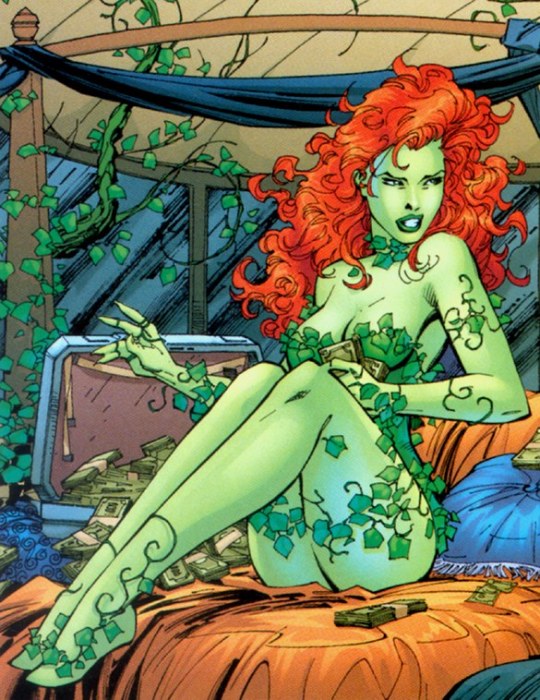
The relationship between female empowerment and male disempowerment can be described as dichotomous. There is a prevailing narrative that a woman with power is a threat (Austin, 2015: 286). She defies male dominance and dares to enforce her own rules and focus on her own desires. The man tries to regain control over the dangerous woman. (Mulvey, 1975: 67) Notice how generally these women have a good cause at heart: Talia’s aim is to preserve the planet from disastrous actions of human kind; similar to Poison Ivy, who is concerned with flora; Catwoman protects felines and girls and women of lower classes and is essentially a version of Robin Hood. Harley Quinn has a mental illness, and copes with it by adopting animals and looking after them. Killer Frost is a heat-vampire and when she finds a cure (Firestorm) she pretty much stops attacking people, because she was doing it only to survive. Another interesting observation: it is their connection to men that pushed them to extremism. Talia is manipulated by her dad (who assures her of his love for her to save him on numerous occasions, but in the end kills her and uses her body to store his consciousness (BTAS)). Pamela Isley is nearly murdered by her male colleague. Selina is sexually abused by men. Killer Frost is locked up in a working reactor. I would assume everyone knows what’s the deal with Harley. Most often it contrasts with the actions of the hero: he tries to help her, make her normal again, fix her. This perpetuates a stereotype of how women are wrong about their prejudice against men, because ‘not all men are like this’. What is also inevitably and unknowingly created is that these women do not need fixing, it would change them at core. They aren’t even evil, as much as they would only help a cause if they believed in it. Even if they try to change for a man, they relapse: but through relationships with women, they are healed and they are able to embrace their power and be good, be evil, be something in the middle – and being true to themselves at the same time.
Obviously, I am going to talk more about Harley Quinn. In the case of Harley Quinn, Joker physically and psychologically abuses her, manipulates her, makes her lose her job and her degree, drives her mad and so on. When she exercises her agency and comes close to killing Batman, successfully trapping him – something Joker himself had not succeed in – he angrily sets the boundaries between himself and Batman, their relationship, and Harley, who must only follow orders (Mad Love #8-72, 2009). Man games are one thing, and woman must never intrude! Harley learns it the hard way – it costs her almost every bone in her body. Joker ‘owns’ Harley and when she leaves him, he is livid and immediately sets to return her into his possession (Gotham City Sirens #10-26, 2011), exemplifying how Joker is unable to accept Harley’s existence beyond him (Austin, 2015: 285). On the other hand, Batman tries to establish his authority over her by bringing her to justice and rehabilitating her. He perceives her as a victim and someone, who despite being as dangerous and cunning as Joker (Mad Love #8, 2009), still needs saving. Harley is caught between two men, and while Batman is genuine in his desire to get her away from Joker (plus he doesn’t have romantic feelings towards her), it’s a no-win situation for Harley, because she can’t break away from her dependence issues. Enter Poison Ivy. By making Harley immune to all toxins, she both makes Harley stronger and cancels her main advantage over her. Poison Ivy doesn’t see Harley as a sidekick or a child who doesn’t know any better – she makes it possible for Harley to keep up with her. It also transforms Poison Ivy’s character. From then on, writers have abandoned the trope of Poison Ivy’s occasional boring crush on Batman.
The third category is the ‘spin-off franchise baggage’ (Scott, 2013). It is quite easy to spot this type of characters, as their names are literally the derivative of their male (the original) counterpart: Batgirl, Supergirl and She-Hulk.
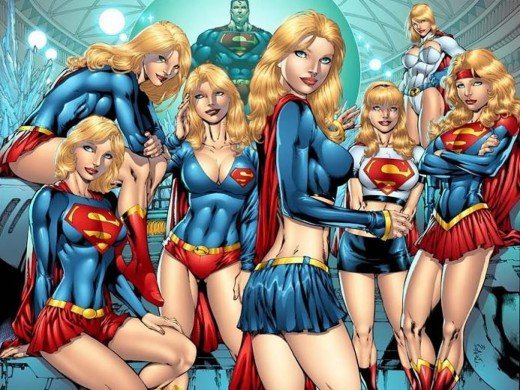
She does not have a sound or at least unique backstory, she is essentially the female version of the character, but secondary to him: weaker, less interesting, less popular and less developed (Fretheim, 2017: 32-33). Supergirl is another survivor of Krypton; She-Hulk was created literally by blood transfusion from Bruce Banner to his cousin, Jennifer Walters (they wanted to give her his rib, but it sounded vaguely familiar for some reason).
Sometimes such a character can break out of the limited space, provided by the legacy of the common root of the aliases (Bat-family, Super-family), for example, Barbara changes her line of activity after injury and Batgirl becomes Oracle, a character in her own right, giving voice to a readership with disabilities. It is also an example of how ‘fridging’ can be turned into a positive character development. In the Killing Joke, Barbara is harmed only because of her association with Jim Gordon, and the thematic purpose of her injuries is to provide emotional stakes for Batman. Nevertheless, she doesn’t stop being a hero and doesn’t become a liability. She is unique and interesting to read about. However, while it is possible, it is also reversible, as in 2011 Barbara puts on the Batgirl suit once again (Cocca, 2016: 78). Rarely, she can become more popular than the original hero, like Hawkgirl.
In terms of visual representation, it is quite easy to retrace sexual discrimination in the way that the male and female counterparts are portrayed. Although men with super powers do not need muscles to lift cars, they look jacked, a bit too much really. Hulk is positively ugly. Women, on the other hand, cannot let themselves be caught looking a tad less than ready for a Playboy photo-shoot.
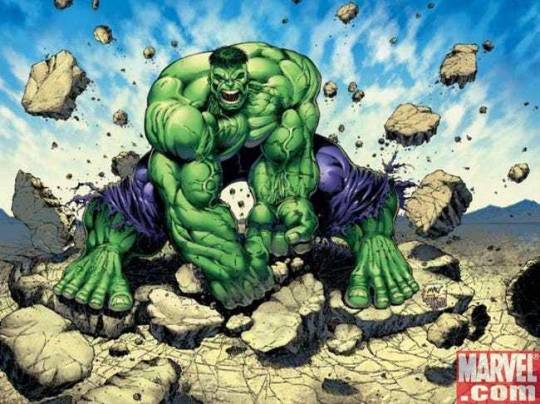
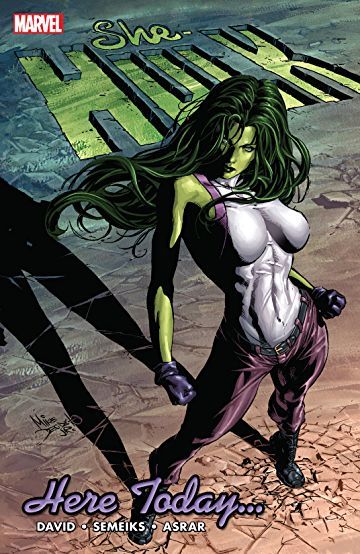
Where male superheroes are embodying the ideal of masculinity, they are fit, muscled, and attractive – they are essentially the asexual subjects, while even their own gender-bent versions are put into suggestive poses and are given revealing outfits and heels (Batman: The Drowned #1, 2017).

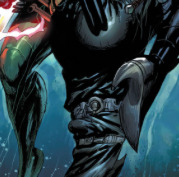
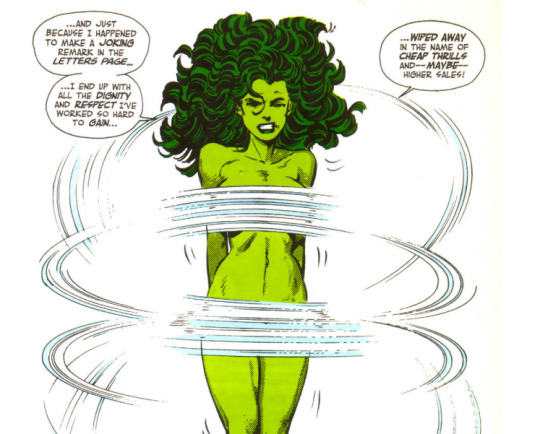
Last but not least, the category of the female superhero. She is created as a distinct character, with her individual backstory and a set of powers. She is Wonder Woman, Starfire, Black Canary.
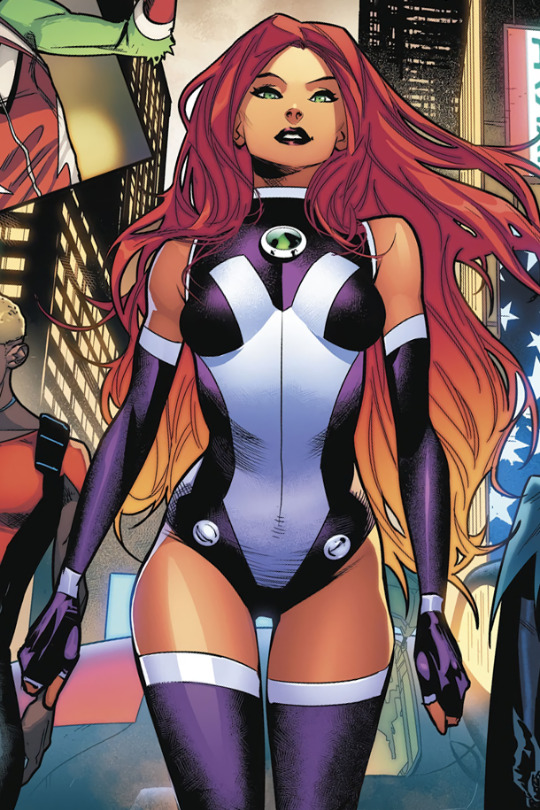
The female superhero has her own backstory and her own set of powers. This doesn’t mean that they’re saved from the male gaze, unfortunately. The image above is one of the most modest costumes of Starfire I have found. This is particularly Starfire’s curse:

The female superheroes stand seemingly separate from the male superheroes, but men are still the part of the equation. Damsels, seductresses and knockoffs are directly linked to the male superheroes in forms of extensions of the mythos. The female superheroes exist in a state of eternal struggle against the male superheroes, male villains and male readers. According to O’Reilly, the female superheroes are restricted not only by the authorities, but even by their own sex (O’Reilly, 2012).
To understand the mechanism of gender politics within the comics, let’s examine Wonder Woman against the male superheroes, namely Superman and Batman. While deconstructing their dualistic natures, we encounter a paradox of Otherness (Fretheim, 2017: 10-11). Every superhero has a secret identity. This duality attracts the reader, by making him or her identify through resemblance with the superhero’s disguise as the everyman or everywoman. The comic book promotes the idea of inclusivity, participation. It indulges the fantasy, providing the impression of the activist participation. (Pitkethly, 2012: 216) Superhero defeats the villain and saves America, and the reader feels like he or she has contributed to the victory of ‘truth, justice and the American Way’. It is no coincidence that the popularity of superhero comics correlates to the periods of the high and low threat (Peterson, Gerstein, 2005: 887). In times of the high threat, such as the Second World War, there is a significant increase in interest for ‘powerful’ and ‘tough’ fictional protagonists (889).
Superman is also a meek reporter Clark Kent. Bruce Wayne is also a caped crusader Batman. As a superhero, Wonder Woman, too, exists as a heroic person and an alter ego of an ordinary woman, Diana Prince. Her otherness is expressed through being an Amazon, a super-powered being and a half-goddess. However, as a woman, she is also forced into position of the Other to Superman and Batman (De Beauvoir, 1949). If you’re unfamiliar with De Beauvoir, she referred to the socially constructed concepts of women and femininity in her Second Sex, written a year after women got the right to vote in France. The standards of the so-called femininity were established by patriarchal society and every woman was obliged to live up to these standards. De Beauvoir described the cultural symbols and social pressures put on girls from the very young age. Girls were taught to be passive and submissive, she did not have a choice as she was defined by the male dominated world to be a mother, a grandmother, a housewife. Men were the one, the neutral, the common, while women were the Other. While a man was the creator and the subject, a woman was an object in his power and always secondary to him. She also talked about the social taboos such as menstruation, criticizing pseudo-science that invented the idea of the biological inferiority of women. Menstruation was not the topic to talk about in public, since the very ancient times girls and women were locked in their houses during the periods. The female body is regarded as the Strange, Different, the Other. There is a cult of appearance; the women learn how to manipulate people with their looks. There are certain norms of how a real woman should look. The praises of female virginity and restrictions of the expose of the female sexuality were listed among the other ways in which the male society discriminated the female accumulation. Wonder Woman is, therefore, pitted as the Other to the male superheroes, while being alienated from other women.
So we can see that no category of the female characters in comics are any better than another or have it any easier than another. Nonetheless, the figure of the female superhero is important, because it is a definite step away and open resistance to being background or second-hand. Girls couldn’t relate much to Lois, because, honestly, they were not supposed to – she was not their fantasy, she was male fantasy. There were some female superheroes prior to Wonder Woman, but yet again, they were created by men for men, and girls didn’t want anything to do with them. Industry naturally assumed that the reason is girls being generally uninterested in comics. As Dr. Marston noted, ‘not even girls want to be girls’ (Lepore, 2016: 187). He set to change that, and hence Wonder Woman was born.
*it needs another note: Injustice series is actually one of my favourite comic runs ever, and it has great female characters and great character development and is simply amazing. But it’s based of a game, and they had to work with the game premise, and they did a fantastic job doing it. Still, as I love it dearly, I’m allowed to critique it and so I will.
**despite the name, Superman’s Girlfriend Lois Lane is a wild and fun comic.
Bibliography
Simone, G. (1999). Women in Refrigerators, available at: http://www.lby3.com/wir/
Austin, S. (2015). Batman's female foes: The gender war in Gotham City. Journal of Popular Culture, 48(2), 285-295.
Mulvey, L. 1999. ‘Visual Pleasure and Narrative Cinema.’ In Film Theory and Criticism: Introductory Readings, edited by Leo Braudy and Marshall Cohen, 833–44. New York: Oxford University Press.
Scott, S. (2013). Fangirls in refrigerators: The politics of (in)visibility in comic book culture. Transformative Works and Cultures, vol. 13
Fretheim, I. M. (2017) Fantastic Feminism: Female Characters in Superhero Comic Books. Trykk: Reprosentralen, Universitetet i Oslo
Cocca, C. (2014). Negotiating the Third Wave of Feminism in "Wonder Woman". PS: Political Science and Politics, 47(1), 98-103.
Cocca, C. (2016). Superwomen: gender, power, and representation.
O’Reilly, J. D. (2005). The Wonder Woman Precedent: Female (Super)Heroism On
Trial. Journal of American Culture 28.3: 273–83.
De Beauvoir, S. (1949). The Second Sex. New York: Vintage Books
Pitkethly, C. (2011). The pursuit of identity in the face of paradox: Indeterminacy, structure and repetition in Superman, Batman and Wonder Woman. Journal of Graphic Novels and Comics, 1-7.
Peterson, B., & Gerstein, E. (2005). Fighting and Flying: Archival Analysis of Threat, Authoritarianism, and the North American Comic Book. Political Psychology, 26(6), 887-904.
Lepore, Jill. (2015). The Secret History of Wonder Woman. New York: Knopf.
8 notes
·
View notes